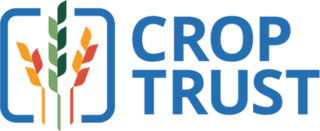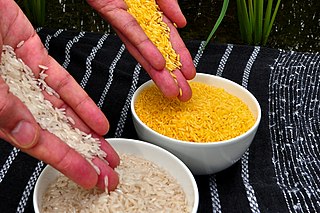
The Green Revolution, or the Third Agricultural Revolution, was a period of technology transfer initiatives that saw greatly increased crop yields. These changes in agriculture began in developed countries in the early 20th century and spread globally till the late 1980s. In the late 1960s, farmers began incorporating new technologies such as high-yielding varieties of cereals, particularly dwarf wheat and rice, and the widespread use of chemical fertilizers, pesticides, and controlled irrigation.
The only mandated international agricultural research organization is the CGIAR The CGIAR Fund supports 15 international agricultural research centers such as the International Water Management Institute (IWMI), International Rice Research Institute (IRRI), the International Institute of Tropical Agriculture (IITA), the International Livestock Research Institute (ILRI), the International Food Policy Research Institute (IFPRI) and the Center for International Forestry Research that form the CGIAR Consortium of International Agricultural Research Centers and are located in various countries worldwide, The centers carry out research on various agricultural commodities, livestock, fish, water, forestry, policy and management.

The International Maize and Wheat Improvement Center is a non-profit research-for-development organization that develops improved varieties of wheat and maize with the aim of contributing to food security, and innovates agricultural practices to help boost production, prevent crop disease and improve smallholder farmers' livelihoods. CIMMYT is one of the 15 CGIAR centers. CIMMYT is known for hosting the world's largest maize and wheat genebank at its headquarters in Mexico.

The International Rice Research Institute (IRRI) is an international agricultural research and training organization with its headquarters in Los Baños, Laguna, in the Philippines, and offices in seventeen countries. IRRI is known for its work in developing rice varieties that contributed to the Green Revolution in the 1960s which preempted the famine in Asia.

The International Food Policy Research Institute (IFPRI) is an international agricultural research center founded in 1975 to improve the understanding of national agricultural and food policies to promote the adoption of innovations in agricultural technology. Additionally, IFPRI was meant to shed more light on the role of agricultural and rural development in the broader development pathway of a country. The mission of IFPRI is to provide research-based policy solutions that sustainably reduce poverty and end hunger and malnutrition.
Quality Protein Maize (QPM) is a family of maize varieties. QPM grain contains nearly twice as much lysine and tryptophan, amino acids that are essential for humans and monogastric animals but are limiting amino acids in grains. QPM is a product of conventional plant breeding and an example of biofortification.

The Crop Trust, officially known as the Global Crop Diversity Trust, is an international nonprofit organization with a secretariat in Bonn, Germany. Its mission is to conserve and make available the world's crop diversity for food security.
The International Center for Agricultural Research in the Dry Areas (ICARDA), a member of CGIAR, supported by the CGIAR Fund, is a non-profit agricultural research institute that aims to improve the livelihoods of the resource-poor across the world's dry areas.

Bioversity International is a global research-for-development organization that delivers scientific evidence, management practices and policy options to use and safeguard agricultural biodiversity to attain global food- and nutrition security, working with partners in low-income countries in different regions where agricultural biodiversity can contribute to improved nutrition, resilience, productivity and climate change adaptation.

The Australian Centre for International Agricultural Research (ACIAR) is an Australian Government statutory agency that forms part of the overseas aid program in the Foreign Affairs and Trade Portfolio, reporting to the Minister of Foreign Affairs. ACIAR was established under the Australian Centre for International Agricultural Research Act 1982 (Cth),(the ACIAR Act), as amended, to identify agricultural problems in developing problems and brokers Australian agricultural scientists to find solutions.
Plant breeding in Nepal is the art and science of improving the heredity of plants for benefit of humanity in Nepal. The major crops of Nepal include rice, wheat, maize, oil seeds and grain legumes.

Biofortification is the idea of breeding crops to increase their nutritional value. This can be done either through conventional selective breeding, or through genetic engineering. Biofortification differs from ordinary fortification because it focuses on making plant foods more nutritious as the plants are growing, rather than having nutrients added to the foods when they are being processed. This is an important improvement on ordinary fortification when it comes to providing nutrients for the rural poor, who rarely have access to commercially fortified foods. As such, biofortification is seen as an upcoming strategy for dealing with deficiencies of micronutrients in low and middle-income countries. In the case of iron, the WHO estimated that biofortification could help cure the 2 billion people suffering from iron deficiency-induced anemia.
Crop diversity or crop biodiversity is the variety and variability of crops, plants used in agriculture, including their genetic and phenotypic characteristics. It is a subset of and a specific element of agricultural biodiversity. Over the past 50 years, there has been a major decline in two components of crop diversity; genetic diversity within each crop and the number of species commonly grown.
The Norman E. Borlaug International Symposium, commonly known as the Borlaug Dialogue, is an annual international symposium tackling the topic of global food security organized by The World Food Prize Foundation. Past symposia have focused on the promises and challenges presented by biofuels for global development, the dual challenges of malnutrition and obesity, water insecurity and its impact on development and stability in the Middle East, and the possibility of replicating the Green Revolution.
The Future Harvest Consortium to Rebuild Agriculture in Afghanistan (FHCRAA) is a consortium of aid organizations working to restructure agriculture in the south Asian nation. In the beginning of January 2002, ICARDA, with the support of USAID, brought together 34 organizations including CGIAR centers and other research institutes, relief and development organizations, NGOs, U.S. universities, donor agencies and the Afghanistan Ministry of Agriculture at a meeting in Tashkent, Uzbekistan. FHCRAA was the result.
The Irrigated Rice Research Consortium (IRRC) focuses on agricultural research and extension in irrigated rice-based ecosystems. In partnership with national agricultural research and extension systems (NARES) and the private sector, the IRRC provides a platform for the dissemination and adoption of natural resource management (NRM) technologies in Asian countries. The IRRC is currently active in 11 countries: Bangladesh, Cambodia, China, India, Indonesia, Laos, Myanmar, the Philippines, Sri Lanka, Thailand, and Vietnam. It aims to strengthen NARES-driven interdisciplinary research, link research and extension, facilitate rice farmers' uptake of technological innovations, and enable environmentally sound rice production to expand to feed growing populations.

Kazi M. Badruddoza was a Bangladeshi agronomist who is credited with using Agricultural Genetics and Plant Pathology to extensively increase agricultural production in Bangladesh thus leading the nation toward self-sufficiency in staple cereal crops. He is known as the Father of Modern Agriculture in Bangladesh and the only National Emeritus Scientist of Bangladesh. He was one of the early leaders of the global team of the green revolution for his role in development of high yielding wheat, rice and maize varieties. For his work in Agricultural genetics, Badruddoza was awarded numerous honors, including the Independence Day award, the highest civilian award of Bangladesh. Prior to creation of Bangladesh as an independent state, he was also awarded the Tamgha-e-Imtiaz, a state organized civil award, in former West Pakistan, as well as the Tamgha-e-Pakistan. In addition, he is credited with the genetic engineering for the highly nutritious and large variety of guava, the Kazi Guava. In his honor, the genus of fungus, Kaziboletus. in the family Boletaceae, discovered in Bangladesh, was named after him.
Buberuka Highlands is one of the 12 major agroecological zones in northeast Rwanda and covers an area of 600 square kilometres (230 sq mi), which is nearly one third area in the Ruhengeri Prefecture. Located near the border with Uganda, the highlands include parts of the Byumba and Ruhengeri provinces located to the south of the equator.

Silverio García Lara is a researcher and head of AgroBio Unit and a professor of Nutri-Omics Group with the Monterrey Institute of Technology and Higher Studies, Campus Monterrey within the National School of Science. Silverio García-Lara obtained his PhD in Experimental Biology from the Autonomous Metropolitan University during which he develop a PhD stay the University of Ottawa in Canada and subsequently Postdoctoral studies at the International Center for Maize and Wheat Improvement, CIMMYT, Int.

Dilbagh Singh Athwal was an Indian-American geneticist, plant breeder and agriculturist, known to have conducted pioneering research in plant breeding. He was a professor and the Head of the Department of Plant Breeding at Punjab Agricultural University and an associate of Norman Borlaug, a renowned biologist and Nobel Laureate, with whom he has collaborated for the introduction of high-yielding dwarf varieties of wheat.












